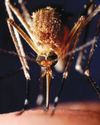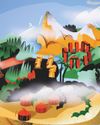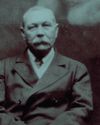Nefertiti’s beguiling bust has today made her one of the most widely recognised figures of the ancient world. But, asks Joyce Tyldesley, do this Egyptian queen’s accomplishments 3,000 years ago really merit her modern-day acclaim?

In 1333 BC the young Egyptian king Tutankhamun decided to abandon the royal city of Amarna. The sculptor Thutmose, supervisor of a large workshop specialising in the production of royal images, was a man entirely dependent on royal patronage. He had little choice but to pack up his tools and follow his king. Thutmose sailed away from Amarna, leaving behind a city filled with royal sculptures and a storeroom crammed with unwanted works of art.
Not long after his departure, the city’s sculptures were viciously attacked by those opposed to the Amarna regime, and many of the statues were reduced to fragments. The storeroom, however, remained untouched. Here, on 6 and 7 December 1912, a German archaeological team led by Ludwig Borchardt discovered more than 50 pieces, including a startlingly lifelike bust of a queen. The woman was unlabelled, but she wore the unique flat-topped blue crown that identified her as Nefertiti, consort to Tutankhamun’s predecessor, Akhenaten.
Nefertiti’s bust had been carved from limestone, then covered with a layer of gypsum plaster, which allowed Thutmose or one of his workmen to create the fine definition of the muscles and tendons in her neck, to add creases around her mouth and under the eyes, and to emphasise her cheekbones. Paint then gave Nefertiti a smooth pink-brown skin, deeper red-brown lips, arched black brows and a colourful floral collar encircling her slender neck. Her right eye was created from rock crystal; her left eye is missing.
THE BIRTH OF TUT-MANIA
Diese Geschichte stammt aus der July 2018-Ausgabe von BBC Earth.
Starten Sie Ihre 7-tägige kostenlose Testversion von Magzter GOLD, um auf Tausende kuratierte Premium-Storys sowie über 8.000 Zeitschriften und Zeitungen zuzugreifen.
Bereits Abonnent ? Anmelden
Diese Geschichte stammt aus der July 2018-Ausgabe von BBC Earth.
Starten Sie Ihre 7-tägige kostenlose Testversion von Magzter GOLD, um auf Tausende kuratierte Premium-Storys sowie über 8.000 Zeitschriften und Zeitungen zuzugreifen.
Bereits Abonnent? Anmelden

World's First Malaria Vaccine
The World Health Organization’s director-general hails ‘historic moment’ as mass immunisation of African children begins

Is River Pollution Putting The Species In Jeopardy Again?
Ten years ago, it was jubilantly announced that o ers had returned to every county in England. But is river pollution putting the species in jeopardy again?

The Big Burnout
Long hours, low pay and a lack of appreciation — among other things — can make for a stressful workplace and lead to burnout. It’s something we should all be concerned about, because over half of the workforce reports feeling it

Putting Nature To Rights
More countries are enshrining the right to a clean environment into law. So if a company or government is impinging upon that right, you could take them to court

Mega Spaceship: Is It Possible For China To Build A Kilometre-Long Spacecraft?
Buoyed on by its successful Moon missions, China has launched a five-year study to investigate the possibility of building the biggest-ever spacecraft

Are We Getting Happier?
Enjoying more good days than bad? Feel like that bounce in your step’s getting bigger? HELEN RUSSELL looks into whether we’re all feeling more cheery…

“Unless the Japanese got the US off their backs in the Pacific, they believed they would face complete destruction”
Eighty years ago Japan’s surprise raid on Pearl Harbor forced the US offthe fence and into the Second World War. Ellie Cawthorne is making a new HistoryExtra podcast series about the attack, and she spoke to Christopher Harding about the long roots of Japan’s disastrous decision

Your Mysterious Brain
Science has mapped the surface of Mars and translated the code for life. By comparison, we know next to nothing about what’s between our ears. Over the next few pages, we ask leading scientists to answer some of the most important questions about our brains…

Why Do We Fall In Love?
Is it companionship, procreation or something more? DR ANNA MACHIN reveals what makes us so willing to become targets for Cupid’s arrow

Detecting the dead
Following personal tragedy, the creator of that most rational of literary figures, Sherlock Holmes, developed an obsession with spiritualism. Fiona Snailham and Anna Maria Barry explore the supernatural interests of Sir Arthur Conan Doyle